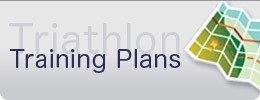What’s Next After the Triathlon Racing Season is Over?
As the triathlon season winds down for athletes in the northern hemisphere, the question I am asked most as a coach is, “What do I do now?”
It’s reasonable to assume that we all want to get better next year, not worse.
The fall is is the time to begin taking steps to make 2017 even better. I’ll approach how to do this in three steps as well as identify specific recommendations for swim, bike and run.
Step 1. Look Backward
“Failure is success if we learn from it.” – Malcolm S. Forbes
How do you know if you’re getting better if you don’t know where you started from? You don’t.
Here are questions to ask yourself about this past triathlon racing season:
- Did you achieve your goals? Why or why not?
- What worked well? Why?
- What didn’t work so well? Why?
- What do you need to do differently?
I recommend taking a blank sheet of paper then start writing things down like:
- “I fell off my bike when I tried to mount it while running at X race. I need to practice my running bike mounts more.”
- “I finished in the top 1/3 of the athletes in the swim portion of my last triathlon for the first time ever. I attribute this to attending masters swim classes 2x/week and asking for corrections from the coach.”
Keep writing. Put the paper away for a day or two then pull it out again and write more.
Review everything on your list after several iterations and ask:
- Is there a pattern like inconsistent training, training too hard or training not enough in one or all three of the sports that is holding you back?
- What did you do well that you can repeat in 2017?
- What jumps out as the most significant things that you can improve on in 2017?
I’d suggest identifying 2-5 things that you want to improve on and can improve on. With this list, you can now start looking forward.
Step 2. Look Forward
“If you don’t know where you are going, you will probably end up somewhere else.” – Lawrence Peters
Looking forward, what do you want to accomplish in 2017? How will you define success?
Use the backward looking exercise to as a starting point for setting goals. For example, if you finished your IRONMAN 70.3 in a 5:54 personal best finish time this year, finishing under 5:40 is reasonable goal for 2017. Be sure to break down any race time goals by swim, T1, bike, T2 and run.
View Goal Setting for Triathletes video.
Of course, different course or different weather conditions may make the goal more or less achievable so it’s important to have non-outcome goals as well. I like to call these learning goals, as there’s something to be accomplished irrespective of outcomes like finish times or qualifying for a world championship.
An example of learning goal would be: “I want create, practice and execute a nutrition and hydration plan that enables me to race at my potential without experiencing discomfort from eating or drinking too much.”
Step 3. Do Now
With a good understanding of this year and your goals to get better next year, what you do now this fall is lay the stepping stones that will lead you to your goals in 2017.
Unfortunately, I’m not able to address everyone’s goals and areas of improvement, but I will touch on a few key areas that will benefit all triathletes plus share some specific suggestions for the swim, bike and run. I recommend focusing on no more than 2-3 areas at one time through the fall and winter.
Key areas to focus on in the fall:
- Incorporate strength training into your weekly schedule. Strength training to build strength and increase resistance to injury. Strength training will:
- Improve muscle function, strength & power,
- Increase lean muscle mass,
- Decrease body fat,
- Decrease risk of injury and
- Counter-balance endurance training.
- Exercise daily. This does not mean you have to do swim, bike and run workouts all the time. Mix it up with other exercises like yoga, Pilates, mountain biking or cross country skiing. Find “fun challenges” like hiking all the local mountain peaks or riding in Moab. In whatever form your exercise takes, include short higher intensity efforts. Intervals will:
- Improve muscle fiber firing efficiency,
- Train fast twitch muscle fibers (“use them or lose them”),
- Improve form and technique and
- Add training variability.
- Work on swim, bike and run skills and techniques.
View Tips for the Triathlon Off Season video.
Specific Recommendations for Swim, Bike and Run
Improving in the Swim
I’ve heard it said that biking and running is 80% fitness / 20% technique while swimming is the opposite: 20% fitness / 80% technique. Regardless of what the real numbers are, swimming is challenging to become better because swimming more volume will not make you faster if your form is sloppy.
The best option to improve on the swim is to find a qualified swim coach who can work with you 1-on-1 or provide feedback as part of a master’s team. I personally like swimming with masters as it’s motivating to swim with others and it’s a way to gauge improvement relative to the other athletes.
Improving on the Bike
Given that the cycling leg takes a large proportion of a triathlon in terms of time and distance, it’s worth noting that a 5% improvement in biking will lead to a faster time than a 5% improvement in swimming (i.e. “more bang for your buck”).
At the simplest level, you’ll become a better cyclist by consistently cycling more. For me personally, it took me until my third year of training and racing to become a strong cyclist in my triathlon races.
Like in running, interval training and hill climbing will improve speed and power. Example hill repeat set within a 45 minute workout that targets anaerobic endurance:
- Warm up easy 10′ with 6 x 15″ of fast spinning (easy gear) mixed in
- Steady, moderate effort 10′
- Interval set: 6 x 60″ RI 90″– fast, hard efforts standing the first 30″ then seated for last 30″. Easy, easy spin for RI.
- Finish with steady, moderate effort 10′
Please note: ‘ = minutes, ” = seconds, RI = rest interval in between repetitions
For improving strength on the bike, suggested exercises are:
- single leg good morning,
- overhead squat,
- dumbbell deadlift with calf raise,
- split squat or back squat,
- crab walk with ankle band,
- dead bug
- plus other core and dynamic warm up exercises.
Get a bike fit by a qualified bike fit professional. Being placed in a more powerful and comfortable position is one of the easiest way to improve on the bike.
Improving in the Run
Here are the relatively simple ways to improve in the run:
- Fix your running form. Effective movement and proper posture will help you be a smoother, more efficient runner.
- Vary your run speed during training. A simple method to vary your running speed is to introduce short “pickups” or intervals.
- Increase your run cadence (gradually) to improve efficiency, speed and reduce risk of injury.
Conclusion
By taking the time to read this, you are already showing commitment to getting better next year. Keep it up!
If you need help with off-season training, we offer online off-season training plans for triathletes.
I wish you a fantastic racing season in 2017!
David
—
Coach David B. Glover, MS, CSCS has completed 28 IRONMAN distance triathlons including two sub 9 hour finishes and winning Vineman Full twice. Now, David’s passion now is helping triathlete and other endurance athletes achieve their dreams through his online triathlon education and training company, ENDURANCEWORKS. David has an MS in Exercise Physiology and is certified as a coach by USA Triathlon and USA Cycling as well as having his CSCS from NSCA. After six years of living, training and coaching in the triathlon mecca of Boulder, CO, David currently resides in Southern California.


